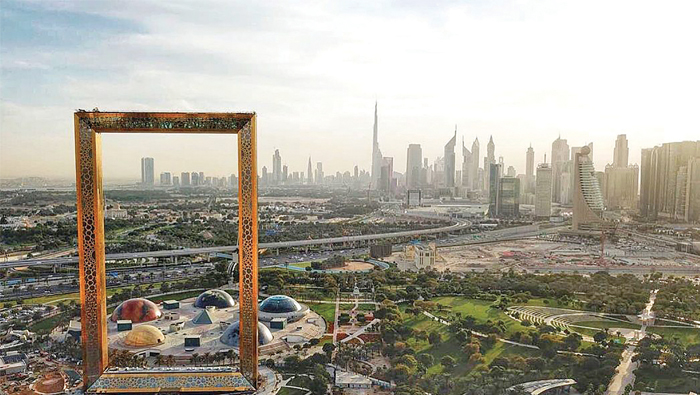
Dubai: Residents and citizens headed from Oman to Dubai have been extended an invitation to visit the city’s latest tourist attraction, the Dubai Frame.
The 150-metre structure, built at a cost of AED230 million or OMR24 million, was opened to the public on January 1.
The Dubai Frame offers stunning views of the city from the observation deck and features a walking tour describing how the Emirates has evolved through the ages.
“Dubai Frame is one of the most recent projects in Dubai. It tells us a story about Dubai in the past, the present, and the future. I will not tell you everything about it. Just come here, see it, and enjoy it,” Maitha Al Khalifa Al Suwaidi, corporate communications officer at Dubai Municipality’s Leisure Facilities Department, said.
Award-winning Mexican architect Fernando Donis, who won the 2009 ThyssenKrupp Elevator Architecture Awards to create a tall, emblematic structure in Dubai, conceived the Dubai Frame.
“Dubai is a city of iconic landmarks and structures. We wanted to add one that gives people a chance to catch a perfect glimpse of the city and its future. If you look from one side of the viewing gallery, you see Dubai’s past. If you look over from the other side, you see the modern Dubai,” Al Suwaidi said.
The structure features a central glass and steel unit on a concrete skeleton. All the glass used is a triple-glazed lamination unit, which serves as insulation against the hot climate and keeps the building cool. Over 15,000 square metres of gold cladding was used to cover its exterior. Each panel is a stainless steel sheet coated with a thin film of titanium nitrate to give it that signature gold colour.
Over 2,900 metres of laminated glass was used to construct the Dubai Frame, which was built by nearly 3,600 engineers, architects, and construction workers. Elevators that transport visitors to the iconic building in Zaabeel Park were designed by ThyssenKrupp, and can climb 40 floors in a span of 75 seconds.
Two giant cranes atop each of the frame’s vertical pillars lifted all materials used to design the Dubai Frame. They were capable of lifting up to 12 tonnes each. In addition, the outline of the frame, which used 116 square metres of switchable smart glass on the floor of the observation deck, and the Dubai Frame itself, were constructed based on the ratio of the Golden Rectangle, a specific number often found in nature’s design and having long been an inspiration for ancient Greek artists, architects, and engineers.
“We had to be careful while building the Dubai Frame’s foundations as it is quite a tall building and its structure is different from others. We had to construct deeper foundations for the frame to give it added stability, and architects made an almost raft-like foundation. They then added some concrete and steel piles for increased stability to improve the load capacity and the strength of the building,” Al Suwaidi revealed.
“Because this is Dubai, a lot of people ask us whether the building is actually covered with gold. But this is not true. We just used a titanium nitrate paint commonly used in industries. To source gold paint would not just have been difficult, but expensive as well,” she said.